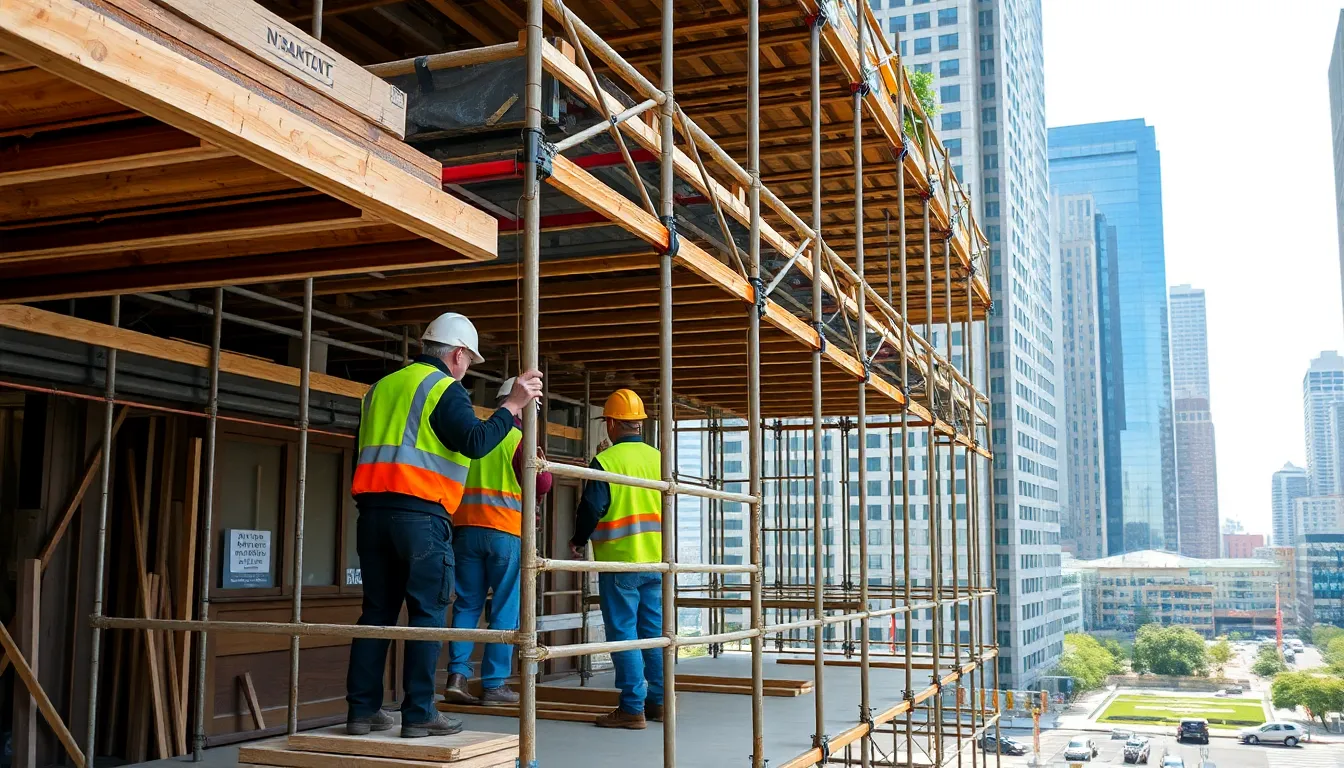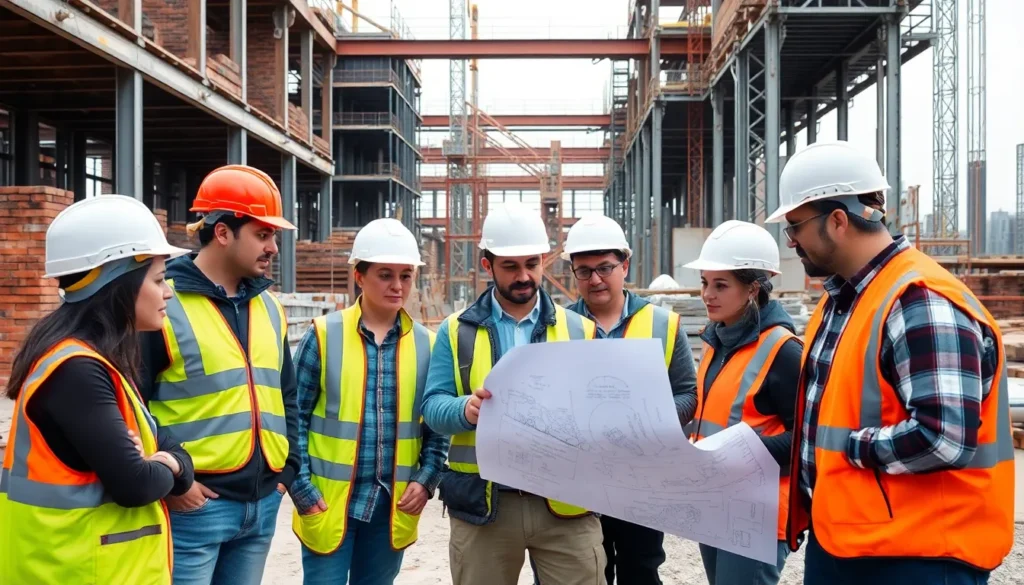Table of Contents
ToggleBuilding codes play a crucial role in ensuring safety, sustainability, and efficiency in construction. These regulations set the standards for design, materials, and methods used in buildings, helping to protect occupants and the environment. By adhering to these codes, builders and architects create structures that not only stand the test of time but also meet the evolving needs of society.
As urban areas expand and populations grow, the importance of robust building codes becomes even more apparent. They provide a framework for addressing challenges such as energy efficiency, accessibility, and disaster resilience. Understanding these codes is essential for anyone involved in the construction industry, from seasoned professionals to aspiring builders. With a solid grasp of building codes, stakeholders can contribute to safer and more sustainable communities.
Overview of Building Codes
Building codes establish specific regulations that govern construction standards. These codes ensure structural integrity, limit environmental impact, and foster occupant safety. They cover various aspects, including:
- Structural Requirements: Codes mandate design criteria that buildings must meet to withstand loads, forces, and environmental conditions.
- Fire Safety: Regulations include fire-resistant materials, emergency exits, and fire suppression systems.
- Energy Efficiency: Standards promote the use of energy-efficient materials and systems, reducing consumption and environmental impact.
- Accessibility: Codes ensure that buildings provide access for people with disabilities, adhering to standards like the Americans with Disabilities Act (ADA).
- Plumbing and Electrical: Regulations oversee safe installation and maintenance of plumbing and electrical systems, preventing hazards.
Compliance with building codes is crucial for obtaining necessary permits and inspections. Authorities enforce these codes through periodic updates to reflect advancements in technology, safety practices, and sustainability strategies. Each jurisdiction may enforce unique codes, adapting to local conditions and needs. Understanding the specifics of applicable codes enhances compliance and fosters safer, more sustainable community structures.
Importance of Building Codes

Building codes play a vital role in construction by establishing standards that ensure safety, reliability, and sustainability. These regulations protect the well-being of occupants and enhance the quality of urban environments.
Ensuring Safety Standards
Building codes set safety standards across various construction aspects. They regulate structural design, ensuring materials and methods support intended loads and resist hazards such as earthquakes and high winds. Fire safety codes mandate materials and designs that limit fire spread, enhancing evacuation options. Additionally, codes include requirements for plumbing and electrical systems, lowering risks from leaks and electrical failures. Compliance ensures structures withstand natural disasters, reducing injury risks and property damage.
Promoting Energy Efficiency
Building codes promote energy efficiency through guidelines that minimize energy consumption and environmental impact. They regulate insulation levels, window efficiency, and HVAC system performance, ensuring buildings use resources optimally. Codes often include requirements for renewable energy sources, such as solar panels, facilitating a transition towards sustainable energy practices. By enforcing these standards, codes help reduce utility costs and greenhouse gas emissions, contributing to healthier environments for communities.
Types of Building Codes
Building codes fall into several distinct categories, each serving specific purposes to ensure safety and compliance during construction. Understanding these types helps industry professionals adhere to necessary regulations.
Residential Building Codes
Residential building codes govern structures intended for housing, including single-family homes, multi-family units, and townhouses. These codes establish minimum requirements for safety, structural integrity, and durability. Key elements include:
- Structural Standards: Codes dictate material specifications and construction methods to withstand environmental stresses like wind and snow loads.
- Fire Safety Regulations: Guidelines for smoke alarms, fire exits, and fire-resistant materials protect occupants during emergencies.
- Energy Efficiency Standards: Requirements for insulation, window ratings, and HVAC systems aim to reduce energy consumption and lower utility costs.
Commercial Building Codes
Commercial building codes apply to structures used for business purposes, such as offices, retail stores, and warehouses. These codes prioritize safety and functionality in environments with higher occupancy and varied uses. Important aspects consist of:
- Occupancy Loads: Regulations define how many individuals can safely occupy a space based on layout and exits.
- Fire Protection Systems: Codes require certain fire suppression systems, like sprinklers, and strict adherence to evacuation pathways.
- Accessibility Compliance: Ensures buildings are navigable for individuals with disabilities, incorporating ramps and accessible entrances.
Accessibility Codes
Accessibility codes ensure that buildings accommodate individuals with disabilities, promoting equitable access to public spaces. These regulations align with the Americans with Disabilities Act (ADA) and focus on:
- Entrance Requirements: Codes mandate accessible entries, door widths, and pathway gradients.
- Restroom Standards: Regulations outline accessible fixtures, grab bars, and space allocations within restrooms.
- Signage Accessibility: Codes require clear, legible signage in appropriate locations to guide individuals with visual impairments.
Understanding these types of building codes supports industry professionals in creating safe, functional, and inclusive spaces for all users.
Challenges in Implementing Building Codes
Implementing building codes presents various challenges that can hinder compliance and the overall effectiveness of construction projects. Understanding these obstacles is crucial for industry professionals aiming to enhance safety and sustainability.
Compliance Issues
Compliance issues arise when builders and contractors face difficulties adhering to the established building codes. Inadequate training for construction personnel can lead to a lack of understanding regarding specific requirements, resulting in non-compliant structures. Additionally, financial constraints may force some firms to cut corners, compromising safety standards. Inspections can also pose a challenge; if inspectors are understaffed or lack proper resources, the enforcement of code compliance can weaken. These factors often culminate in increased risk for occupants and the environment.
Differing Regulations Across Regions
Differing regulations across regions exacerbate the challenges associated with building codes. Each jurisdiction tailors its codes based on local climates, building materials, and community needs, creating a patchwork of regulations. This variation complicates the work for contractors who operate in multiple areas, as they must familiarize themselves with each locale’s specific requirements. Furthermore, these discrepancies can lead to confusion, delays, and increased costs, ultimately affecting project timelines and budgets. Clear communication and ongoing education about local codes can mitigate these issues, allowing for smoother implementation across various regions.
Building codes play a critical role in shaping safe and sustainable communities. Their comprehensive regulations ensure that construction practices meet essential safety and efficiency standards. As the construction landscape evolves with technological advancements and growing urban populations, these codes must adapt to address emerging challenges.
Professionals in the industry must prioritize understanding and complying with local building codes to foster resilience and inclusivity. By doing so, they not only enhance safety but also contribute to the development of environmentally friendly structures that benefit all community members. Embracing the importance of building codes is key to paving the way for a safer and more sustainable future in construction.




